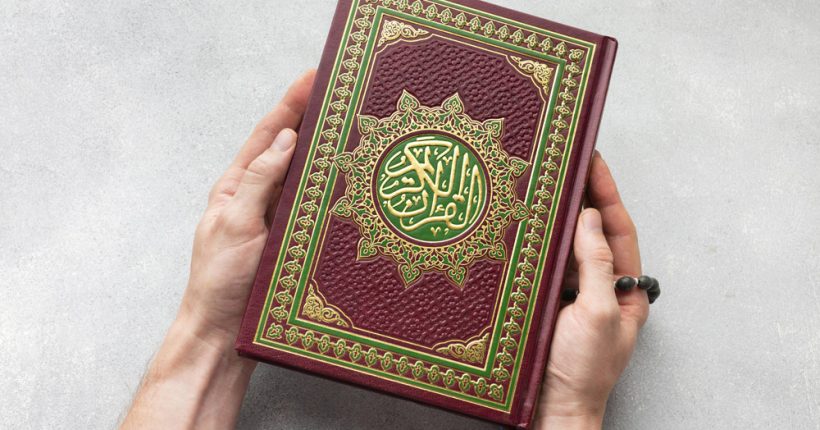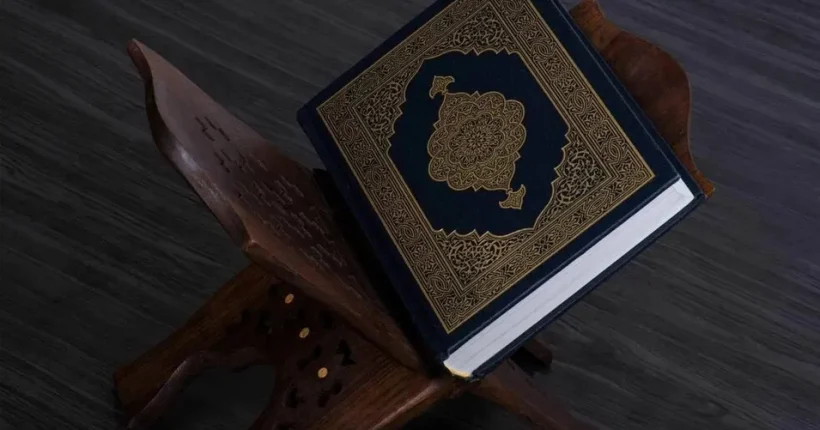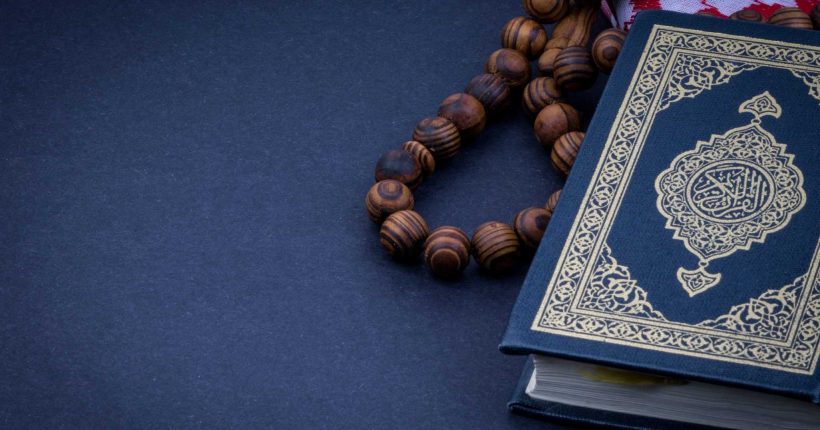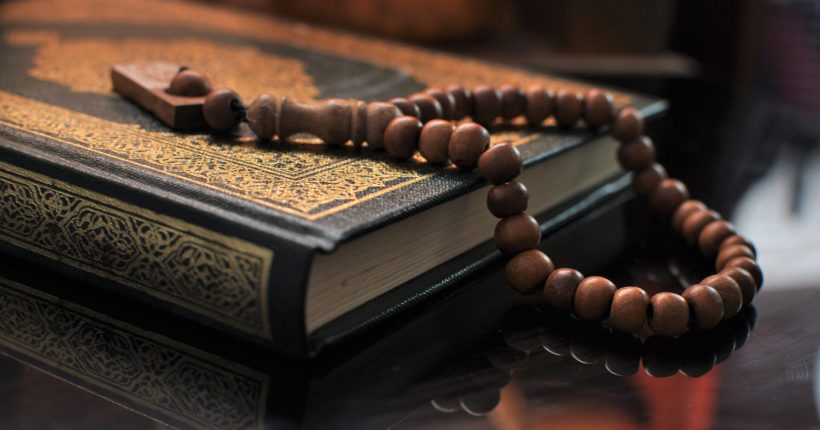Mastery of tajweed is indispensable for Quran recitation. Among all the rules of tajweed, Qalqalah has a special place because it gives your recitation a characteristic clarity and rhythm that can render your Quranic recitation both beautiful and correct.
But, little do many know, there are types of qalqalah tajweed. Yes! Knowing these types can take your recitation from beginner to mesmerizing.
What is Qalqalah?
The word Qalqalah literally means “to bounce.” Quite simply, qalqalah occurs when the following letters (ق، ط، ب، ج، د) are pronounced with a sukoon (absence of a vowel). These letters are called the letters of qalqalah.
When it is pronounced properly, this letter gives a slight echo almost like the tap of a drum, which resonates and makes pronunciation clear.
Examples:
ق in يَقْضِي
د in عَدْ
ج in مَجْرًى
The 3 Types of Qalqalah Tajweed
Yes, three types of qalqalah tajweed, each with its respective rules to indicate the level of sound intensity. Let’s go into detail.
1 Qalqalah Kubra (Major Qalqalah)
Definition: This occurs when a qalqalah letter appears at the end of a word with a full stop (waqf).
How It Sounds: Strong, firm, echoing. Think of a drumbeat punctuating a musical phrase.
Example Letters in Words:
ق in يَقْضِي
د in عَدْ
Qalqalah Kubra, when overdone, sounds like you are forcing it. It should be firm, but natural.
Practice Tip: Read a verse with a waqf at the end and consciously emphasize the qalqalah letter. Record yourself, you’ll be amazed at the difference.
2 Qalqalah Sugra (Minor Qalqalah)
Definition: When qalqalah letters occur in the middle of a word with a sukoon,
How It Sounds: Soft bounce, subtle yet noticeable. Less prominent compared to Kubra.
Examples:
ق in أَقْدَام
ج in مَجْرًى
Practice Tip: Recite slowly while reading and pay attention to the letters that have sukoon. Try to make the bounce audible yet light.
3 Qalqalah Mutawassita (Medium Qalqalah)
Definition: that is one of the types of qalqalah tajweed that occurs between a word’s middle and end, which happens if a letter with sukoon comes near a pause but not at the very end.
How It Sounds: Distinctive bounce, much stronger than Sugra but softer than Kubra.
Examples:
ق in يَأْقَم
د in تَعْدِل
How to Apply Qalqalah Correctly
Applying the types of qalqalah tajweed correctly is where your recitation transforms from ordinary to mesmerizing. Many beginners struggle not because they can’t identify the letters, but because they don’t know how to produce the echo with the right intensity. Don’t worr, we’ve broken it down step by step so you can master it confidently.
Step 1: Identify the Qalqalah Letters
The first thing to do is to identify which letters are qalqalah letters. They are five in total:
ق، ط، ب، ج، د
Think of these as your “echo letters.” Every time they appear with a sukoon, they need that little bounce that gives recitation clarity.
Quick Exercise:
Write a verse of the Quran and highlight all qalqalah letters.
This will train your eyes to spot them instantly.
Step 2: Check for Sukoon
A letter only produces qalqalah when it has a sukoon, that is, an absence of a vowel.
Example:
ق in يَقْضِي → has sukoon → qalqalah applies
ق in قُرْآن → no sukoon → qalqalah does not apply
Tip: Sukoon can be thought of as a “silent pause” that allows the bounce to take place. No pause? No bounce!
Step 3: Determine the type of Qalqalah
Once you’ve identified the letter and checked for sukoon, determine which type it falls under:
Qalqalah Kubra (Major Qalqalah): Letter at the end of a word with a full stop.
Qalqalah Mutawassita: This is the letter that is near the pause, but not completely at the end.
Qalqalah Sugra (Minor Qalqalah): Letter in the middle of a word with a sukoon.
Pro Tip: Start with Kubra first, it’s easier to hear the bounce at the end of a word. Then practice Mutawassita and Sugra as your ear develops.
Step 4: Make the Correct Bounce
Now comes the fun part, making your recitation bounce! The intensity differs depending on the types of qalqalah tajweed:
| Type of Qalqalah | Intensity | Example |
| Kubra (Major) | Strong, firm | عَدْ |
| Mutawassita (Medium) | Moderate | تَعْدِل |
| Sugra (Minor) | Gentle, subtle | أَقْدَام |
Practical Tip:
Kubra: Imagine slapping a drum firmly-loud and clear.
Mutawassita: Tap the drum softly but noticeably.
Sugra: Just a light tap, barely audible but it’s there.
Extra Hack: Record your recitation and listen carefully. You will notice which bounces are too soft or too exaggerated.
Step 5: Mind Your Tongue and Throat Placement
The echo of Qalqalah is not just “shaking your voice.” It requires proper tongue and throat positioning:
ق – back of the tongue touches the soft palate
ط – tip of the tongue touches the upper gums
ب – lips come together firmly
ج – middle of the tongue touches the roof of the mouth
د – tip of the tongue touches the upper gums
Tip: Try saying each letter slowly, then add the sukoon bounce. This builds muscle memory.
Step 6: Practice With Verses, Not Just Letters
It is helpful to practice the letters alone, but you achieve mastery in real practice using words and verses.
Example:
يَقْضِي اللهُ حَقًّا
Step 1: Identify qalqalah letters → ق, د
Step 2: Check sukoon → قْ, دْ
Step 3: Determine type → ق = Mutawassita, د = Kubra
Step 4: Apply Bounce Correctly While Maintaining Flow
Step 7: Repetition and Patience
Consistency is key. Try these:
Daily 10–15 minutes of focused practice on the qalqalah letters
Gradually increase complexity: move from single words → phrases → full verses
Combine listening to expert reciters, such as Sheikh Al-Sudais, with your own practice.
Motivation Tip: Every good bounce reinforces correct pronunciation and builds confidence. At first, your progress may be slow, but with persistence it pays off!
Step 8: Optional Tools for Online Learning
If you prefer structured guidance, online tajweed courses can make all the difference.
Interactive lessons with visual guides for the qalqalah letters
Personalized feedback to correct mistakes
Recorded exercises for tracking improvement
Pro Tip: Tareequl Jannah offers courses specifically designed to help learners apply Qalqalah correctly from day one.
By following these steps, even beginners can learn to apply Qalqalah correctly in a step-by-step manner and master the ‘bounce’ that gives beauty and precision to recitation.
Common Mistakes in Qalqalah
Mastering Qalqalah requires more than just knowledge of the types of qalqalah tajweed, letters and their types; it requires an application in continuity and precision. Even for advanced learners, there are certain mistakes that might subtly distort the recitation. Being able to recognize such mistakes is actually the first step in improving your tajweed. Let’s elaborate on them with examples and some tips on how to avoid them.
Mistake 1: Overemphasizing Minor Qalqalah (Sugra)
What Happens: Most beginners overdo the bounce for Qalqalah Sugra, making it much too strong of a middle-of-word echo. Instead of being subtle, it is disruptive to the flow of the verse.
Example:
Incorrect: Pronouncing أَقْدَام with a heavy “bounce” on the ق
Correct: Apply a light, gentle echo
Tip: Remember that Sugra is a whisper of Qalqalah. To practice it, try reading slowly and softening the echo in the middle of words.
Mistake 2: Neglecting Qalqalah in Medium Positions (Mutawassita)
What Happens: Some learners put Qalqalah only at the end of words, Kubra, and miss the medium positions. That leads to flat recitations in the middle of phrases.
Example:
Verse: يَأْقَمَ
Qalqalah Mutawassita without ignoring ق results in a weak pronunciation.
Tip: Find positions in your practice that are Mutawassita. Medium Qalqalah is the “just right” bounce, noticeable, but not overpowering.
Mistake 3: Confusing Qalqalah with Simple Sukoon
What Happens: Learners often mispronounce a letter with sukoon as a normal pause and do not bounce it at all.
Example:
دْ in عَدْ necessitates Qalqalah Kubra, the absence of which may make the recitation sound lifeless.
Tip: Always ask yourself: “Is this a qalqalah letter with sukoon?” If yes, apply the echo.
Mistake 4: Overdoing Qalqalah Kubra
What Happens: While it’s important to make the echo strong at the end of words, doing too much makes the sound artificial or disrupts the rhythm of the verse.
Example:
Verse: عَدْ
Too much bounce makes it sound more like shouting than recitation.
Tip: Go for clarity, not volume. Think of tapping a drum lightly and firmly, not smashing it.
Mistake 5: Rushing Through Recitation
What Happens: Many learners try to recite fast, skipping or weakening Qalqalah. This is especially common when reciting long verses or during memorization.
Tip: Go slow and focus on each qalqalah letter, then gradually increase speed as you build up accuracy.
Mistake 6: Ignoring Proper Tongue and Throat Placement
What Happens: Even with the applying of the bounce, incorrect positioning of the tongue or throat will distort the Qalqalah sound.
Examples:
ق – back of the tongue not touching soft palate
ج – middle of the tongue not touching the roof of the mouth
Tip: Practice in front of a mirror or record yourself. Pay close attention to how your mouth and tongue move when pronouncing qalqalah letters.
Mistake 7: Practicing Letters in Isolation Only
What Happens: Some learners confine themselves to letters alone, setting aside words and verses. The consequence is faulty application in actual recitation.
Tip: Practice with full words, phrases, and verses, while gradually incorporating Qalqalah into daily recitation.
Mistake 8: Not Listening to Skilled Reciters
What Happens: Recitation without listening to experts may result in mispronunciation and an inconsistency in Qalqalah.
Tip: Follow well-known Quran reciters, such as Sheikh Al-Sudais or Sheikh Abdul Basit, or online tajweed courses for proper pronunciation.
Key Takeaway
Qalqalah requires attention to detail, letter placement awareness, and practice. Avoiding these common mistakes will dramatically improve your recitation, making it precise, melodious, and authentic.
Pro Tip: Combine self-practice, listening to expert reciters, and structured guidance-like online courses from Tareequl Jannah-to perfect your Qalqalah application.
Explore our courses to learn Qalqalah the correct way!
Benefits of Learning Qalqalah Properly
Here are the benefits of learning the types of qalqalah tajweed:
Improves clarity: Accurate pronunciation of words
Prevents mispronunciation: Keeps the original meaning intact.
Makes Recitation Melodious: Pleasing to the listeners and fulfilling for yourself
Builds confidence, especially in public recitations.
Strengthens one’s knowledge of the tajweed foundations for more advanced rules.
FAQs About Types of Qalqalah in Tajweed
Q1: How many qalqalah letters are there?
Five: ق, ط, ب, ج, د.
Q2: Does Qalqalah affect the meaning of words?
Mispronunciation can change meanings, so precision is important.
Q3. Is Qalqalah the same in all Quran recitations?
Generally yes, but slight variations exist in Qira’at styles.
Q4: Can beginners learn Qalqalah online?
Yes! Online courses provide guided lessons and give feedback.
Q5: How long does it take to master Qalqalah?
With frequent practice, improvement is noticeable within weeks; mastery may take months.
Enroll in Tareequl Jannah Courses and start your learning journey!
Are you ready to master the 3 types of qalqalah tajweed and take your Quran recitation to the next level? At Tareequl Jannah, we offer: Expert-led Online Tajweed Courses, Personalised feedback by qualified Quran teachers, Flexible scheduling for learners of all ages.
Don’t wait! Start your journey to perfect recitation from today by visiting Tareequl Jannah. and signing up for our courses. Feel the delight of reciting the Quran beautifully and correctly.





